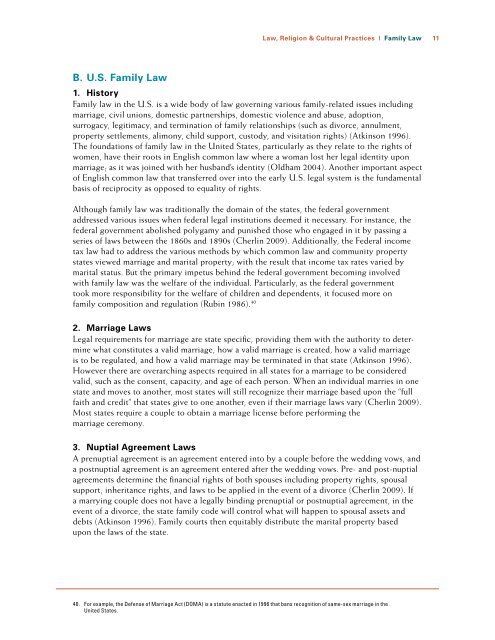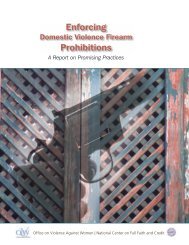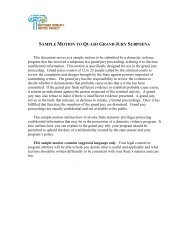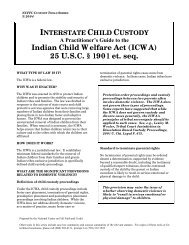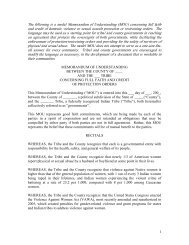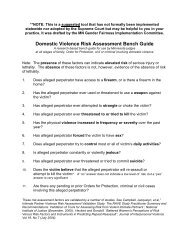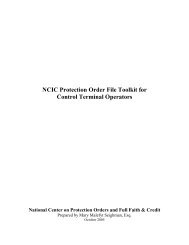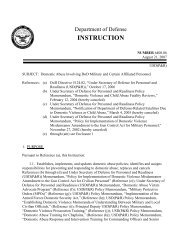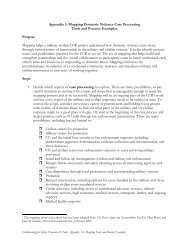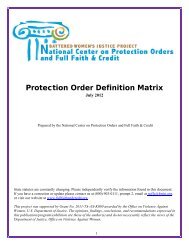ISLAMIC MARRIAGE CONTRACTS - Peaceful Families Project
ISLAMIC MARRIAGE CONTRACTS - Peaceful Families Project
ISLAMIC MARRIAGE CONTRACTS - Peaceful Families Project
Create successful ePaper yourself
Turn your PDF publications into a flip-book with our unique Google optimized e-Paper software.
Law, Religion & Cultural Practices | Family Law<br />
11<br />
B. U.S. Family Law<br />
1. History<br />
Family law in the U.S. is a wide body of law governing various family-related issues including<br />
marriage, civil unions, domestic partnerships, domestic violence and abuse, adoption,<br />
surrogacy, legitimacy, and termination of family relationships (such as divorce, annulment,<br />
property settlements, alimony, child support, custody, and visitation rights) (Atkinson 1996).<br />
The foundations of family law in the United States, particularly as they relate to the rights of<br />
women, have their roots in English common law where a woman lost her legal identity upon<br />
marriage; as it was joined with her husband’s identity (Oldham 2004). Another important aspect<br />
of English common law that transferred over into the early U.S. legal system is the fundamental<br />
basis of reciprocity as opposed to equality of rights.<br />
Although family law was traditionally the domain of the states, the federal government<br />
addressed various issues when federal legal institutions deemed it necessary. For instance, the<br />
federal government abolished polygamy and punished those who engaged in it by passing a<br />
series of laws between the 1860s and 1890s (Cherlin 2009). Additionally, the Federal income<br />
tax law had to address the various methods by which common law and community property<br />
states viewed marriage and marital property; with the result that income tax rates varied by<br />
marital status. But the primary impetus behind the federal government becoming involved<br />
with family law was the welfare of the individual. Particularly, as the federal government<br />
took more responsibility for the welfare of children and dependents, it focused more on<br />
family composition and regulation (Rubin 1986). 40<br />
2. Marriage Laws<br />
Legal requirements for marriage are state specific, providing them with the authority to determine<br />
what constitutes a valid marriage, how a valid marriage is created, how a valid marriage<br />
is to be regulated, and how a valid marriage may be terminated in that state (Atkinson 1996).<br />
However there are overarching aspects required in all states for a marriage to be considered<br />
valid, such as the consent, capacity, and age of each person. When an individual marries in one<br />
state and moves to another, most states will still recognize their marriage based upon the “full<br />
faith and credit” that states give to one another, even if their marriage laws vary (Cherlin 2009).<br />
Most states require a couple to obtain a marriage license before performing the<br />
marriage ceremony.<br />
3. Nuptial Agreement Laws<br />
A prenuptial agreement is an agreement entered into by a couple before the wedding vows, and<br />
a postnuptial agreement is an agreement entered after the wedding vows. Pre- and post-nuptial<br />
agreements determine the financial rights of both spouses including property rights, spousal<br />
support, inheritance rights, and laws to be applied in the event of a divorce (Cherlin 2009). If<br />
a marrying couple does not have a legally binding prenuptial or postnuptial agreement, in the<br />
event of a divorce, the state family code will control what will happen to spousal assets and<br />
debts (Atkinson 1996). Family courts then equitably distribute the marital property based<br />
upon the laws of the state.<br />
40. For example, the Defense of Marriage Act (DOMA) is a statute enacted in 1996 that bans recognition of same-sex marriage in the<br />
United States.


